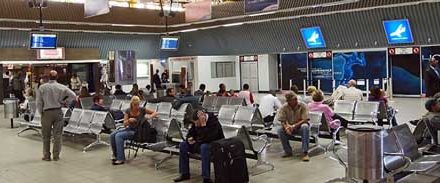
Focus on a fragile coast
 The Namibian Coast Conservation and Management Project, NACOMA, recently published an exceptional book on the coastal environment.
The Namibian Coast Conservation and Management Project, NACOMA, recently published an exceptional book on the coastal environment.
Titled “Namibia’s Coast: desert treasures”, it covers in depth, the many different spheres associated with a coastline that stretches 1570 kilometres from the Orange to the Kunene Rivers and is about 132 million years old.
The book, launched in June, aims to bring all the information collected over the life of the Namibian Coast Conservation and Management project and other published information from both the Namib and the Benguela in one publication highlighting the importance of the meeting point where the icy waters of the south east Atlantic meet the burning shores of the desert.
The book contains 192 pages and seven chapters of well illustrated useful content for multiple end users. It is produced by RAISON (Research and Information Services of Namibia); published by the Ministry of Environment and Tourism, commissioned through its NACOMA project and authored by Tony Robertson, Alice Jarvis, John Mendelsohn and Roger Swart, the same authors responsible for the publication of the Namibian Atlas.
According to Rod Braby, Coordinator of the Namibian Coast Conservation and Management project, their objective is to improve awareness about coastal biodiversity, environmental challenges and the exploitation of coastal resources. The ultimate goal is the design, implementation and monitoring of an Integrated Coastal Management system.
The book provides a broad introduction to the coast which is portrayed as a rugged, sometimes bleak or forbidding, and largely uninhabited area that is a fascinating and complex mix of richness and paucity. The warm and dry Namib desert stands in stark contrast to the cold waters of the Benguela current which is extremely biologically productive.
Although the coastal population is relatively small, its size has grown enormously in recent decades, with Walvis Bay becoming the second largest urban centre after Windhoek. In 2010, the entire population of the coast numbered approximately 143, 000 residents, three-quarters of whom were in the central section of the coast. The coast is the heart of the economy. It is at the coast that high proportions of the country’s income are derived from mining trade through its harbours, marine fishing and fish processing as well as tourism. The last chapter of the book deals with the issues related to the future of the coast. External influences such as economic, climatic, oceanographic and political all have great impact on the coast. The major potholes, pitfalls or dangers associated with the coast are also adressed in the last chapter.











































